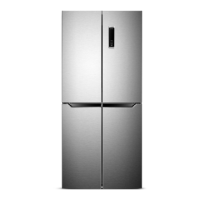• You may also add the weight and cooking notes, e.g. “defrost rst”, “cook from frozen” and
keep a separate log of what is in each drawer. This will save opening the door and searching
around unnecessarily.
Defrosting Frozen Food
• Take the frozen food out from the unit and uncover the frozen food. Let it defrost at room
temperature. Don’t forget that defrosting in a warm area encourages the growth of bacteria
and low temperature cooking may not destroy dangerous bacteria.
• Drain o and throw away any liquid lost during defrosting.
• Always make sure there are no ice-crystals in the food before cooking, particularly with meat.
These crystals indicate that the food has not fully defrosted.
• Cook food as soon as possible after defrosting.
• Many microwaves and ovens have a defrost setting. To avoid bacterial build up, only use
these if you intend to cook the food immediately afterwards.
Never re-freeze anything that has been defrosted unless you cook it again, to kill o
harmful bacteria. Never re-freeze defrosted shellsh. Re-seal packs properly after
removing items. This prevents drying or freezer-burn and a build up of frost on any
remaining food.
15
LSBS4DX18_IB_RC_190418_grace.indd 15 18/4/2019 1:46 PM

